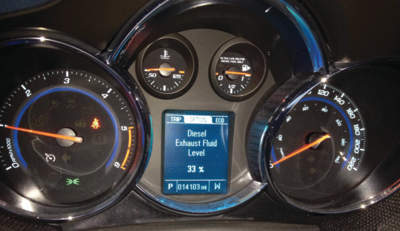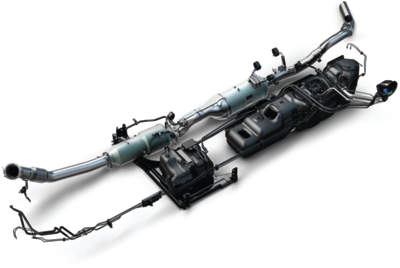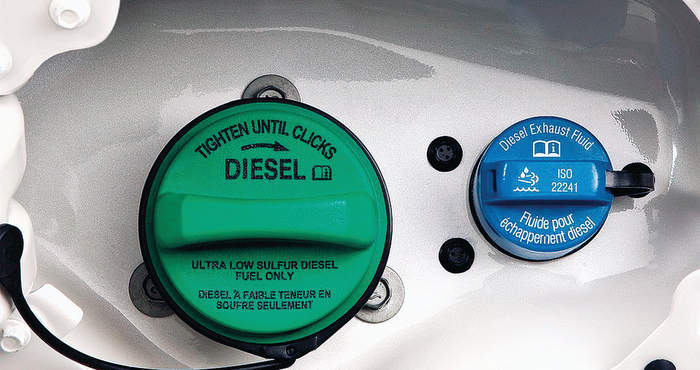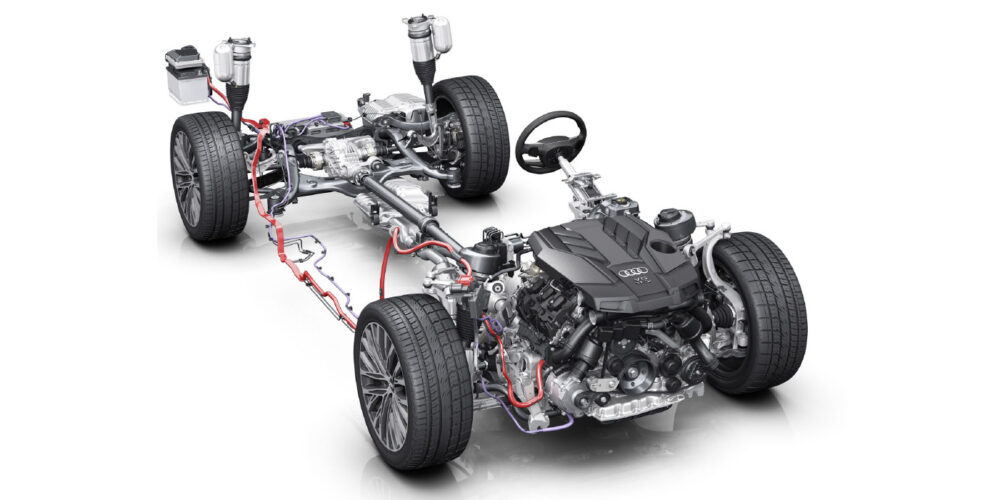You may notice a new product on the parts store shelf that goes by the name Diesel Exhaust Fluid (DEF) and is helping diesels of all sizes meet more stringent emissions standards. DEF is not just a heavy-duty- or import-only product. It’s being used in vehicles ranging from 1.8-L to 7.0-L diesel engines. Early applications started to hit the roads in 2005, and for the 2010 model year, almost every diesel engine uses DEF.
DEF is used in diesel vehicles to reduce nitrogen oxides in exhaust emissions by way of selective catalytic reduction (SCR). In order to meet the Environmental Protection Agency’s emissions standards, all manufacturers of heavy-duty vehicles have turned to a form of SCR, mostly DEF or what is known in Europe as AdBlue.
Your shop is either currently providing DEF service or will be asked about it. Here are the answers you need to make sure DEF is handled properly and is easy to sell as a regular maintenance necessity.
Q: What is DEF?
A: DEF is a concoction of 32.5% urea and 67.5% purified water. It is an odorless, colorless and non-hazardous liquid. DEF should not be diluted with tap water because the minerals in tap water can damage the system.
Q: What is urea?
A: Urea is an organic compound used for reducing the nitrogen oxides that cause smog. DEF and the SCR system then break nitrogen oxides into nitrogen and oxygen so that they are not harmful to the environment when combined in the exhaust.
 Q: Where is the filler?
Q: Where is the filler?
A: The location varies on each vehicle. On some Dodges, the filler will be on the passenger side, underneath the vents near the fire wall. On some Volkswagens, the filler is inside the trunk; on others, it’s on the rear quarter panel. On Fords, the filler is located right next to the diesel filler.
Q: What happens if I get diesel in the DEF tank or DEF in the diesel tank?
A: DEF in the diesel tank will cause the engine to stop running almost immediately, whereas diesel in the DEF tank, even a small amount, can damage the entire SCR system.
Q: What does DEF do to an engine?
A: Nothing. DEF passes right by the engine and works directly with the exhaust gas recirculation (EGR) system. The tank is sometimes controlled by a pair of pressure regulators and injected before a catalytic converter by way of a compressor, air reservoir and regulating valve.
Q: Can DEF strip paint?
A: Most likely, no. Spilling and wiping off with water will leave paint unharmed. A small amount of DEF left on a vehicle will dry but can also be washed away. A large amount of fluid left to dry might pose a problem, and it will stain clothes.
Q: Will DEF freeze?
A: Yes – at 12º F. Freezing and unthawing will not harm the solution.
Q: What happens if it freezes inside the tank?
A: All DEF-equipped vehicles are required to have a heating system in place. Some of these systems send a signal to a DEF dosing control unit, based on ambient air temperature, that allows warm coolant to run through a heating coil, which heats the tank.
 Q: How often does DEF need to be added?
Q: How often does DEF need to be added?
A: The consumption of DEF is dependent completely on gas mileage. A truck averaging 18 MPG will get approximately 900 miles to one gallon of fluid. Most trucks will need DEF added at every oil change or 5,000 miles. Some Dodge trucks are equipped with larger 8 gallon tanks that will go an average of 10,000 miles, all depending on driving conditions. Making money on DEF mainly comes from the amount sold because a fill-up is quick. Adding a fill-up on an LOF package is a good idea since they are generally done at the same time.
Q: How does the diesel particulate filter assist in SCR?
A: The diesel particulate filter is located in the exhaust system much like a catalytic converter, fitted with a removable honey comb catalyst. The filter fills with particle matter (PM), creating backpressure in the exhaust, which causes the PM to combust. About 85% of hard particles are combusted, leaving only small amounts of non-combustible soot in the filter.
According to the EPA, filters should be removed and cleaned every 6 to 12 months depending on driving conditions and habits. Proper DPF cleaning procedures generally require you to heat the filter and blow it out with compressed air and a vacuum to collect PM. Some techs are even investing in automatic DPF cleaners – a big money maker if you service a lot of medium- and heavy-duty vehicles.
Q: What happens when the DEF runs dry?
A: A warning light on the dash indicates a lack of fluid in the tank. A completely empty tank will trigger the PCM to severely reduce engine performance to encourage the driver to fill it and accommodate for the loss of emissions. Some vehicles, like the Chevy Cruz, will be commanded by the PCM to limit maximum speed to 65 mph and decrease to a 10 mph maximum as time and mileage extends.
Q: How should DEF be stored?
A: DEH should be stored in a cool, dry place away from direct sunlight. High and low temperatures have no impact on the quality of DEF, but it does have a shelf life of approximately one year. Even a slight bit of color is an indication of contamination.













